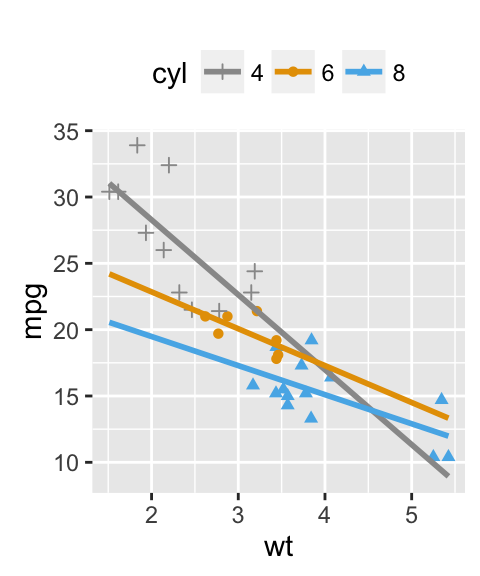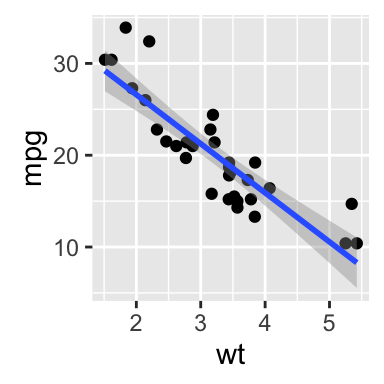

Since we know that class “moderates” the effect between iq and grades, let’s “control” for class by adding class into the model specification. Note the significant negative relationship between iq and grades. Summaryh(model_linear) # generates APA-formmatted results (requires hausekeep package)ġ: (Intercept) b = 125.14, SE = 4.24, t(38) = 29.52, p <. Residual standard error: 8.599 on 38 degrees of freedom Use ggplot function (not ggplot2, which is the name of the library, not a function!). Layer 1: specify data object, axes, and grouping variables Note: ggplot prefers long-form (tidy) data.

#Ggplot2 scatter plot exclude zero points code#
The first line is the first/bottom-most layer, and second line is on top of the bottom layer, and third line is on top of the second layer, and the last line of code is the top-most layer. Ggplot2 produces figures by adding layers one at a time. It takes me many hours to research, learn, and put together tutorials. Consider being a patron and supporting my work?ĭonate and become a patron: If you find value in what I do and have learned something from my site, please consider becoming a patron. Get source code for this RMarkdown script here. Computing between- and within-subjects error bars (also between-within designs).multi-level or hierarchical) models with lmer() from the lme4 package Plotting and testing simple effects when you have interactions.Reference groups and releveling (changing reference group).Fitting linear models (general linear model framework).Facets for grouping: facet_wrap() and facet_grid().Distribution of points with geom_quasirandom().Plotting histograms, boxplots, and violinplots.Adding an overall line of best fit AND separate lines for each group.Adding an overall line of best fit while ignoring class.Subsequent layers: add data points and everything else.Layer 1: specify data object, axes, and grouping variables.Consider being a patron and supporting my work?.


 0 kommentar(er)
0 kommentar(er)
